Plants in terrariums
Plants are an important part of the ecosystem, and this is no different for our chameleon terrarium. Many people use fake plants because they are easy to care for, and they are also used in breeding, mainly because they are easy to keep clean. However, live plants are not only aesthetically pleasing, they also have an important function, and we would like to share some thoughts on this.
So why use living plants in the terrarium?
- Your pet feels safer among the plants
- Better well-being
- He likes to sleep in the cover of leaves
- Less stress when there is a lot of movement outside the terrarium
- Can drink water spray and water droplets by licking them off the leaves
- Humidity will be slightly higher
- More pleasing to the human eye, more aesthetically pleasing to the home
What plants should we use?
Use plants that will cover most of the terrarium. Remember that if you only use small plants at the bottom, it will take a long time for them to reach the upper branches. It is therefore advisable to use plants of different heights from the start, so that your pet can enjoy the natural environment as soon as possible. Alternatively, smaller plants can be placed at a higher level, tied to branches, planted in a hanging pot, or in the planting pockets found in background terrariums.
Here are a few species that we use a lot in our nurseries, and care of them will not be a problem for the novice gardener.
Epipremnum aureum
It is also called devil's vine or devil's ivy because it is almost impossible to kill and it stays green even when kept in the dark.
This is our favourite, because planted in a good soil it will grow into all corners of the terrarium, so you can easily cover the areas between the branches in a few months. It loves a humid terrarium environment and its roots and aerial roots, which can grow out of pots, make it grow even faster. It has the advantage that it can be pruned from time to time to root new plants and then planted to form a reserve plant if it needs to be replaced. Its leaves are large enough to allow water droplets to stand on top, making it easier for the chameleon to drink from and in larger quantities. In our experience, it grows very quickly from its soil, which is kept slightly moist by repeated watering in small amounts. It signals a lack of water by drying out and curling up its leaves, so it is worth re-watering the soil for a few days until it regains its original condition.
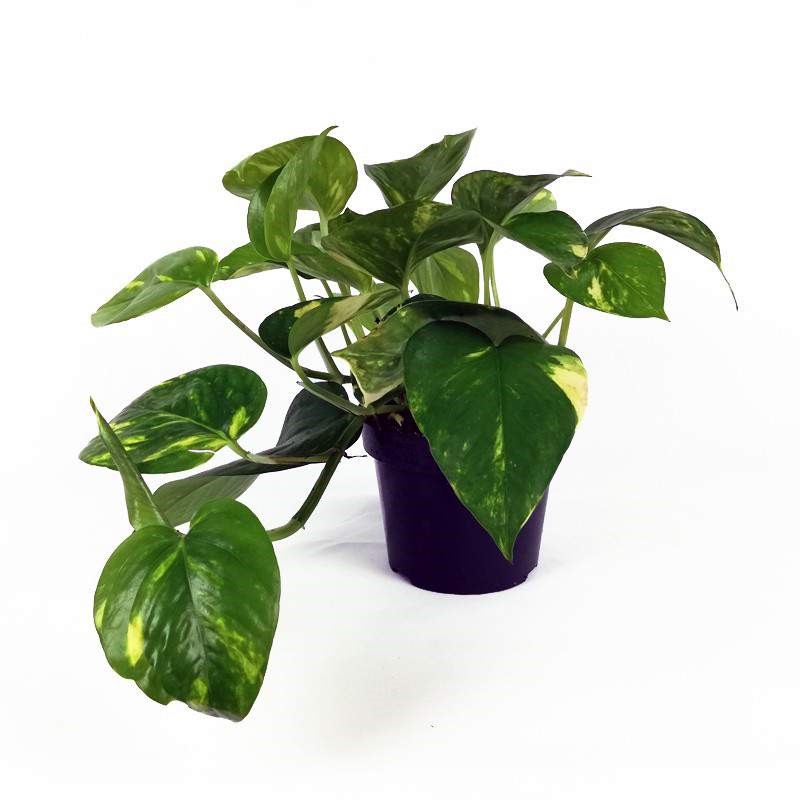

Zamioculcas
Zamioculcas zamiifolia, commonly called ZZ plant or aroid palm
This plant is also very resilient when it comes to terrarium plants, and requires little maintenance. Its tall sprouts can reach to the top of the terrarium and, although it grows slowly upwards, it produces many new sprouts laterally. It tolerates drought well, but is sensitive to overwatering, but always appreciates care. Any parts that are too tall are simply cut off at the stem. It is not worth planting in a larger pot until it has grown out, and transplanting should be done in spring or summer. Patient terrarists can experiment with reproduction, but this is a very time-consuming process.


Ficus benjamina – Weeping fig
This is a plant that is not the easiest to care for because it is very sensitive to changes. Whether it's a major draught, heat fluctuations, incorrect watering or a change of location, it will unfortunately often drop its leaves. In our experience, larger specimens or those planted in bioactive soil are easier to care for. Larger specimens are recommended, as they fill the upper parts of the terrarium and their lush foliage makes them an excellent hiding place for your pet. Care should be taken to allow the soil to dry out slightly between waterings and to water even less in winter. Unfortunately, overwatering is a common problem, which is indicated by root rot and leaf drop. Available in a variety of patterns and colours, it is a very decorative plant. Overgrown specimens can also be used as a climbing tree in the room, our chameleon will like it.
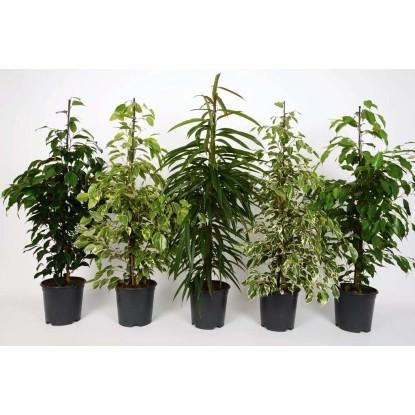
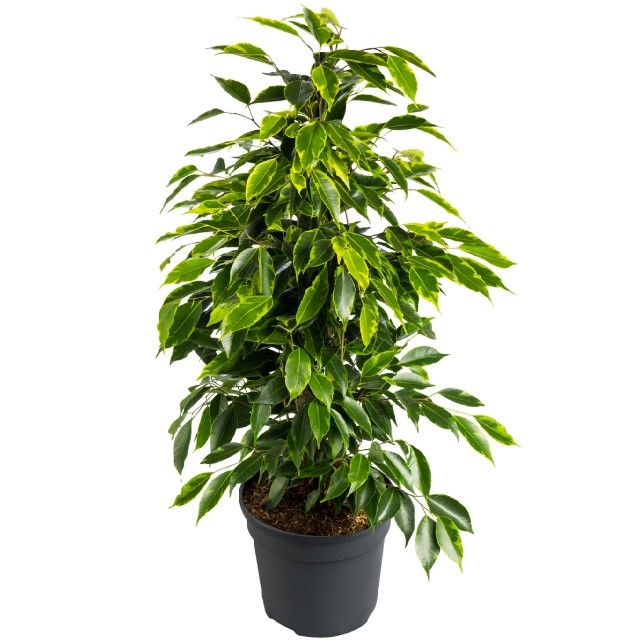
Schefflera arboricola - Dwarf Umbrella-Tree, Umbrella Shrub, Star Leaf, Hawaiian Elf Schefflera, Hawaiian Elf
Sephlera is one of the most common plants in the chameleon terrarium. The leaves are very variegated, with a green background and yellow, gold and white patterns. It can be easily pruned into a shrub or left to grow upwards, depending on what you want. It is a moderately water-demanding plant, so it is important to keep the soil moist, but be careful not to overwater. Young plants should be transplanted annually to promote growth. When it outgrows the terrarium, it can be used as a houseplant or as a climbing tree in the room.
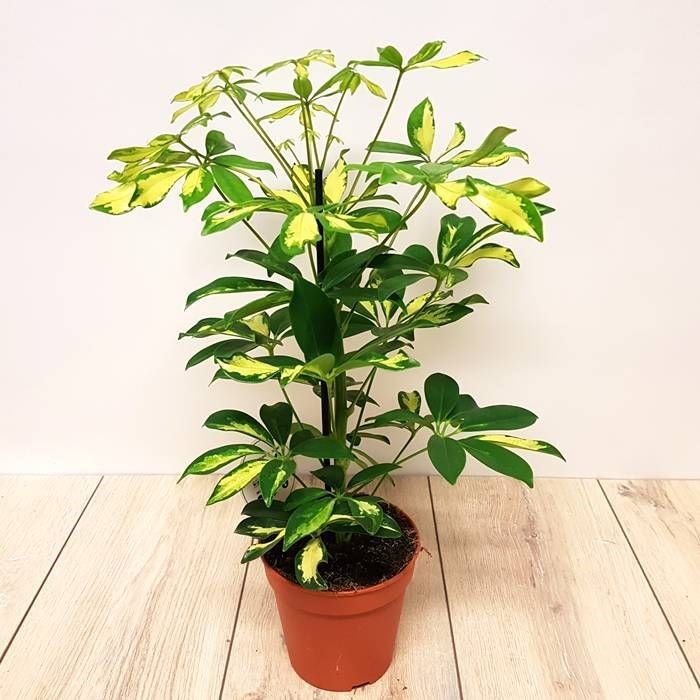
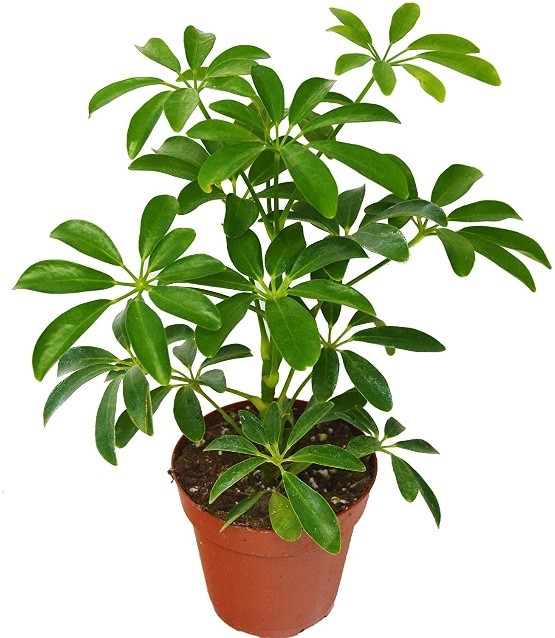
Which plants should NOT be used?
- Poisonous, toxic plants
- Do not have thorns on it, for example cacti
- Very soft, fragile plants that can break under the weight of the animal
- Plants that are too water-demanding or require high humidity, which can create too much humidity if watered continuously.
There are, of course, many alternatives to the plants listed here, but we have tried to list species that we know are well suited to chameleons. Most of them are readily available from garden centres or larger supermarkets. Experimentalists are welcome to try flowering plants, but it should be remembered that once they have flowered, only the foliage remains in the terrarium.
